Let’s just start with the worst case. Admittedly, there aren’t many games that are as extreme on Full HD as Shadow of the Tomb Raider. But even older games suddenly get bitchy when using an HD texture patch. If we look at the bars with the FPS and the 99th percentile, then the FPS of the Wattman-OC increases by about 2.6%, while the 99th percentile improves by about 2.5%. So that still fits. But what happened to the maximum OC? Not only does it slow down by over 6%, but above all the 99th percentile (the optimized minimum FPS) is almost halved!
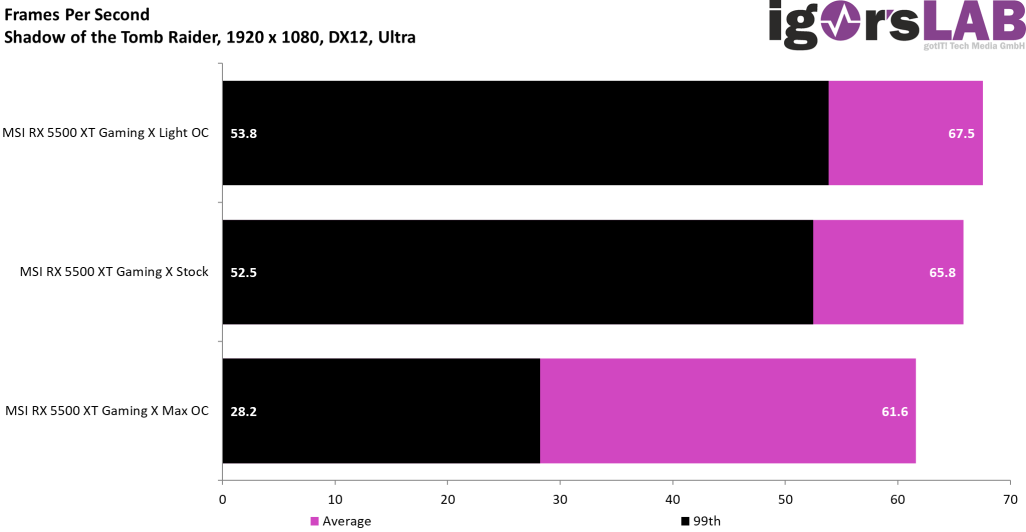
We see this very nicely in the curve for the proportional percentiles. Up to the 75th percentile the world is still in order, even if the descent is stronger than with the other graphs. The total collapse after a stronger downward movement occurs from the 92nd percentile onwards, as the image sequence is also subjectively perceptibly much worse.
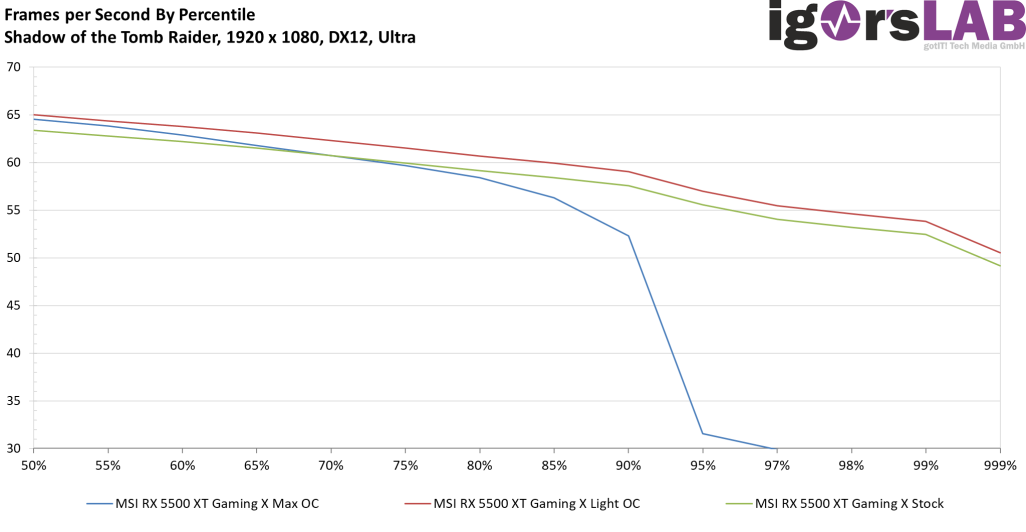
A first clue is the proportion of frame-time ranges, where the proportion of frames is very high at over 33.3 ms and up to 66.6 ms, while the proportion of very fast rendered frames (< 11.11 ms) is the same at maximum and factory OC, while the Wattman OC is clearly ahead here. However, all this has not yet become really clear.
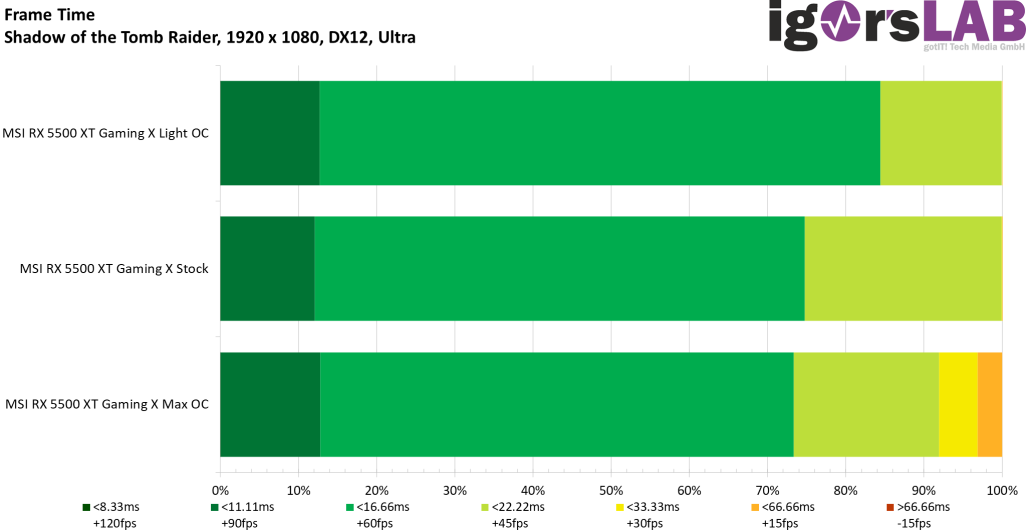
But one must already ask oneself where these high proportions of slowly generated frames come from, which almost hack up the image flow. Therefore I have superimposed all three Frame-Time-Graphs once on a common timeline. At all peaks of the blue curve, the card with maximum OC already runs into the bandwidth limit! It has been proven that there is no limitation via the power supply! The card was with approx. 153 watts (see also later under power consumption) still far below the values that other games could recall, but more about that a bit later.
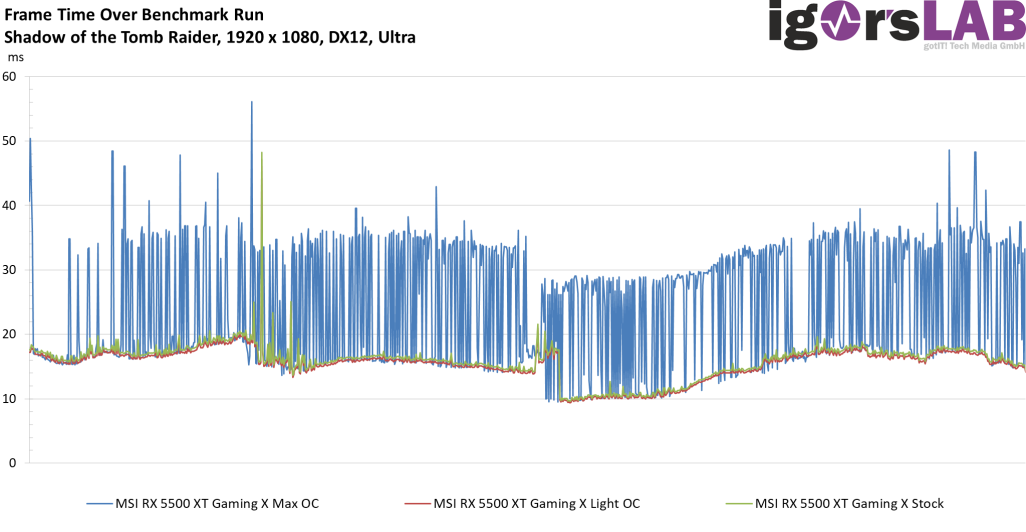
This already somewhat clearer picture is then beautifully expressed in the proportion of variances of over 16 ms (frame-to-frame), especially since these break-ins are not sporadic occasional disturbers, but also occur permanently. The memory requirement here was between 7400 and 7900 MB, but not completely full (see intro picture). It stutters also with 7400 MHz.
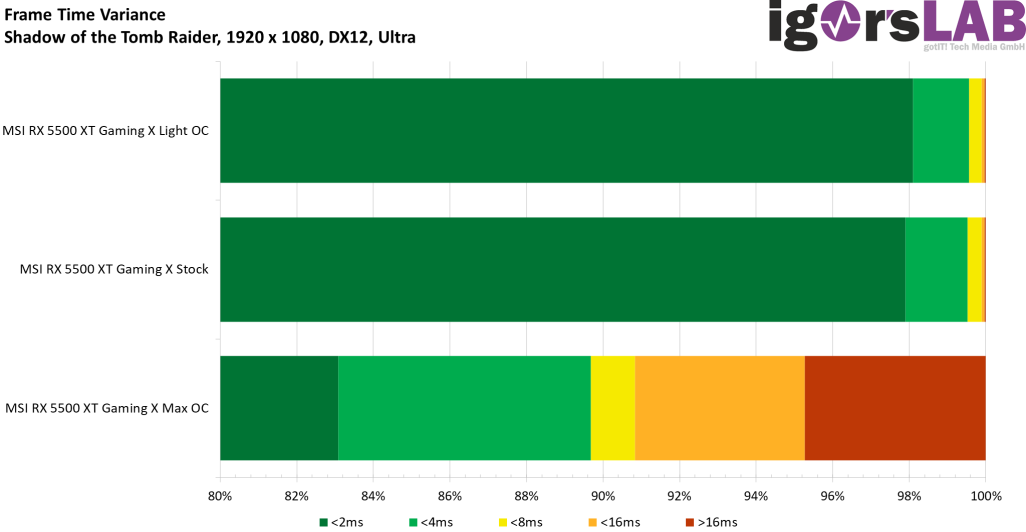
Because also the variances can now be represented as a temporal sequence and one quickly notices that they also occur in a heap and in a direct sequence, but that altogether a kind of “pulsed” or chopped up image result.
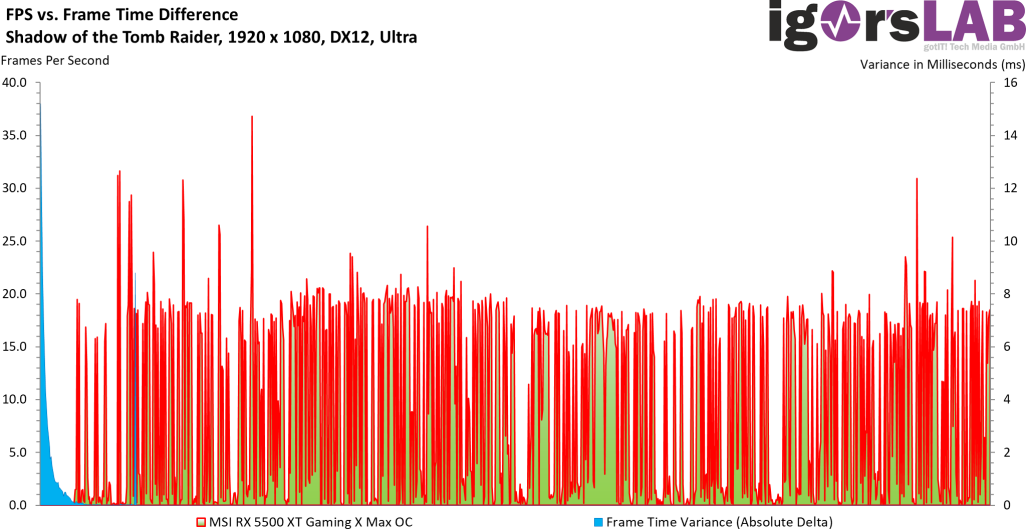
Here the card with Wattmann-OC for a better comparison, whose results look no worse than those with factory OC!
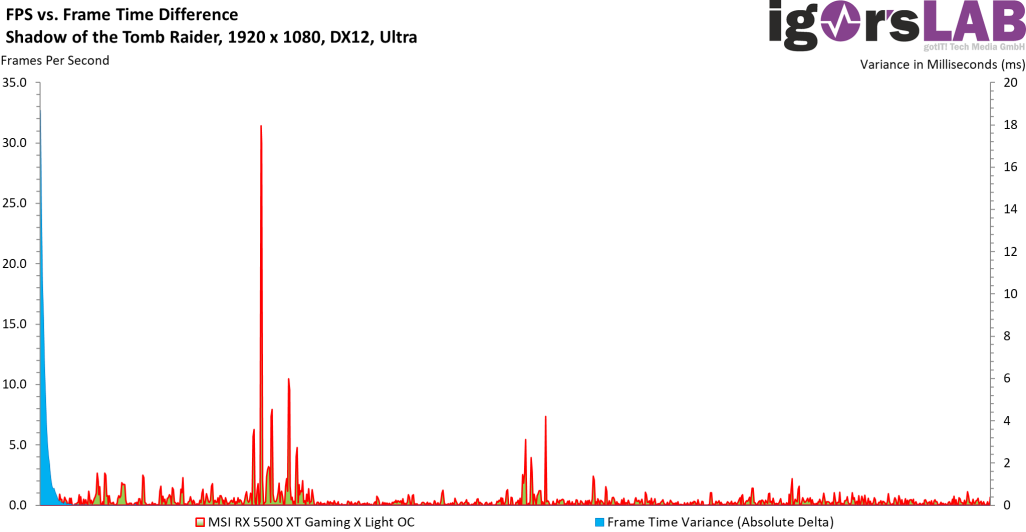
If you now look at the power consumption in high resolution, you get the same, jittery picture, in which the card is not even able to call up the maximum available power of up to 190 watts.
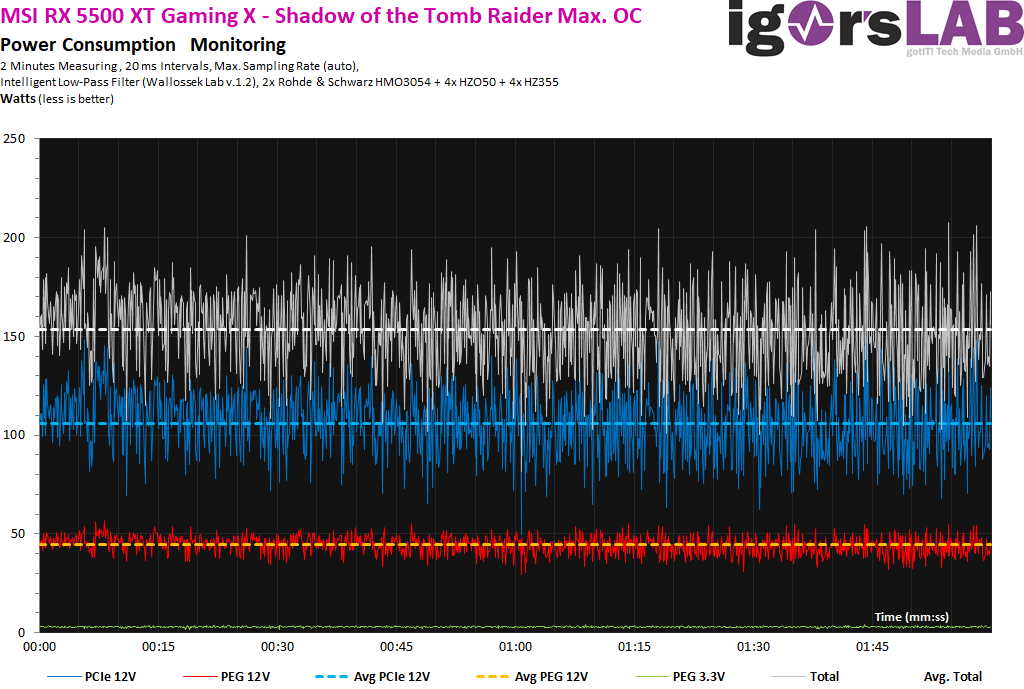
Would you like to see the places where the card runs into the bandwidth limit? Then all you have to do is look at the next graphic! We already see peaks in the microsecond range up to approx. 247 watts in the longer intervals with an average of 250 to 255 watts, interrupted by burglaries down to 75 to 100 watts! My first assumption that AMD could somehow limit the current here, as the voltage was constant at the set 1.35 volts, was unfounded, because in other games it was still well over 30 watts higher.
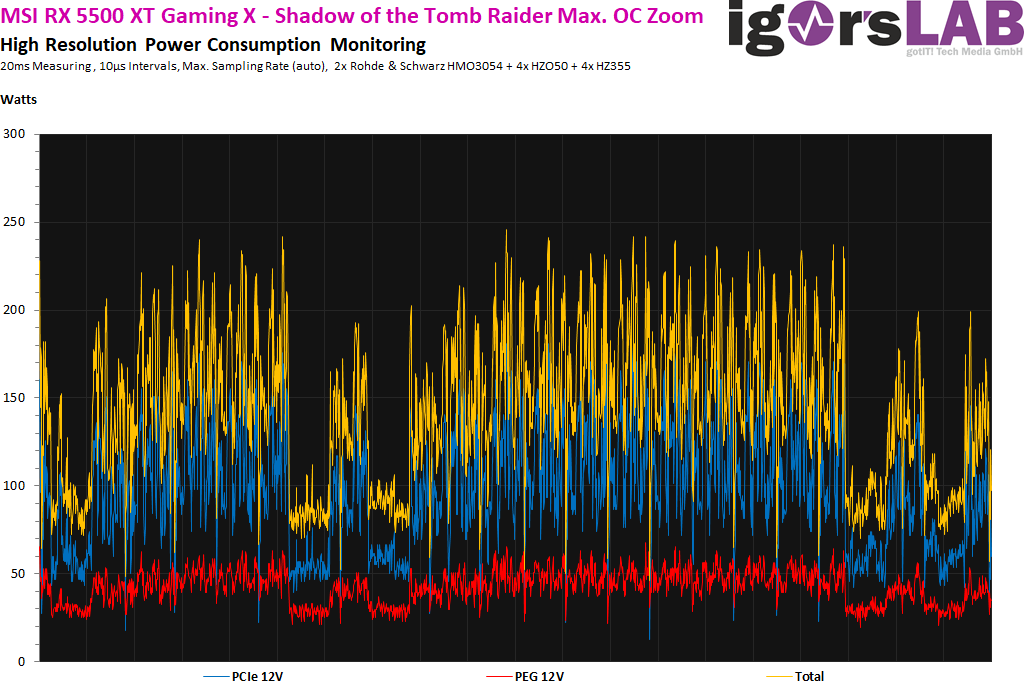
So this is the heartbeat of a graphics card that runs to its limit over the entire runtime. To save AMD’s honor, however, it should be noted that the Wattman setting, which cannot be changed without the MPT, still guarantees normal and unlimited operation. I would definitely not speak of a “bandwidth cripple” now, but the rather narrow interface is the bottleneck, which was included in the price. That it can be different and that our overclocking is stable will be shown by another example and the results of the other games tested in the summary.

































Kommentieren